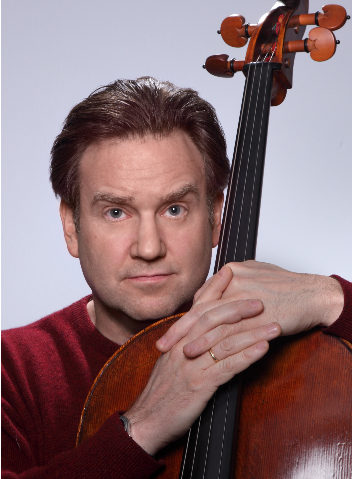By Stephen Brookes • The Washington Post • January 22, 2012
Does it take a village to raise a cellist? Steven Honigberg — a highly regarded member of the National Symphony Orchestra’s cello section — might well agree. In an intriguing and deeply personal recital Saturday at Georgetown’s Dumbarton Church, Honigberg presented an evening of music that reflected the varied influences other cellists have had on his path, from mentors Maurice Gendron and Mstislav Rostropovich to performer-composers such as Marin Marais and Gaspar Cassado. The result was an unabashedly affectionate homage to the cello itself — its deep-voiced intensity, its dark and brooding sonorities, its infinitely subtle beauties — that favored conviction and intimate expression over flashy virtuosity. Accompanied by the always-engaging Audrey Andrist on piano, Honigberg opened with Marais’s “La Folia,” playing with a lean, almost sinewy tone that fit the baroque style well while avoiding the astringency that period hard-liners often adopt. That was followed by an almost confessional reading of Debussy’s “Clair de Lune” and two songs by Dvorak, whose sweeping melodic lines soared with precise, dramatic control.
Accompanied by the always-engaging Audrey Andrist on piano, Honigberg opened with Marais’s “La Folia,” playing with a lean, almost sinewy tone that fit the baroque style well while avoiding the astringency that period hard-liners often adopt. That was followed by an almost confessional reading of Debussy’s “Clair de Lune” and two songs by Dvorak, whose sweeping melodic lines soared with precise, dramatic control.
Honigberg showed off his spectacular technique with Cassado’s mischievous, highly caffeinated “Dance of the Green Devil” before returning to the lush romanticism of Schumann’s Five Pieces in the Popular Style, Op. 102, when he seemed most happily in his element.
With each of the works linked in some way to another cellist, it almost seemed as if Honigberg were mining a kind of collective cello unconscious the rest of us barely knew existed. But in the closing work on the program — Brahms’s quietly epic Piano Trio No. 1, Op. 8 in B Major, with James Stern on violin — Honigberg seemed to weave the disparate roots together, balancing passion with reflection and virtuosity with eloquent simplicity; a taut, tightly focused performance that shimmered with intensity.